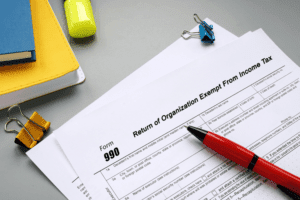
For Cost of Services, you will focus on labor costs directly tied to the rendering of services. The cost of goods sold tells you how much it cost the business to buy or make the products it sells. This cost is calculated for tax purposes and can also help determine how profitable a business is. Inventory includes the merchandise in stock, raw materials, work in progress, finished products, and supplies that are part of the items you sell. You may need to physically count everything in inventory or keep a running count during the year.
- You must remember that the per-unit cost of inventory changes over time.
- The formula for calculating COGS involves adding opening stock, direct expenses, and purchases and then subtracting closing stock from this amount.
- Even though all of these industries have business expenses and normally spend money to provide their services, they do not list COGS.
- Using the FIFO method, COGS for each of the 80 items is $15/item because the first goods purchased are accounted to be the first goods sold.
- In practice, however, companies often don’t know exactly which units of inventory were sold.
Importantly, COGS is based only on the costs that are directly utilized in producing that revenue, such as the company’s inventory or labor costs that can be attributed to specific sales. By contrast, fixed costs such as managerial salaries, rent, and utilities are not included in COGS. Inventory is a particularly important component of COGS, and accounting rules permit several different approaches for how to include it in the calculation. The Cost of Goods Sold (COGS) refers to the direct cost of producing goods that are sold to customers during an accounting period. The COGS includes all the direct costs and expenses of producing the goods. The formula for calculating COGS involves adding opening stock, direct expenses, and purchases and then subtracting closing stock from this amount.
Formal guidance
There is no getting around it if you want to file your taxes and properly calculate your profits and expenses. That said, it doesn’t come without a downside or two, or several. While some companies that deal in services do offer products, many have no inventory at all. These numbers don’t just help you understand this accounting period; they make it possible to set goals for the next accounting period. Knowing the correct numbers helps management, analysts, and investors monitor performance and estimate the company’s bottom line. The cost of goods sold is considered an expense when looking at financial statements.
You will need to report the method you used to value inventory. Understanding what COGS is and how to calculate it can be an essential part of being a successful business owner. COGS is an important metric to help business owners assess the profitability of their operations. To understand this concept better, let’s look at a simple COGS example. We’re firm believers in the Golden Rule, which is why editorial opinions are ours alone and have not been previously reviewed, approved, or endorsed by included advertisers. Editorial content from The Ascent is separate from The Motley Fool editorial content and is created by a different analyst team.
Cost of goods sold: How to calculate and record COGS
COGS does not include costs such as sales and marketing, but it may include all or a portion of indirect costs such as rent, taxes, repackaging, handling, and administrative costs. The direct costs included in this calculation are typically direct material costs and direct labor expenses. COGS does not consider indirect expenses like marketing or shipping in its calculations. The special identification method uses the specific cost of each unit of merchandise (also called inventory or goods) to calculate the ending inventory and COGS for each period. In this method, a business knows precisely which item was sold and the exact cost. Further, this method is typically used in industries that sell unique items like cars, real estate, and rare and precious jewels.
Understanding your inventory valuation helps you calculate your cost of goods sold and your business profitability. Under the weighted average method, there is no inventory layering at all. Instead, the average cost of the units in stock is charged to expense when units are sold. This is a reasonable approach that tends to yield results midway between what would have been reported under the FIFO and LIFO methods. In the income statement presentation, the cost of goods sold is subtracted from net sales to arrive at the gross margin of a business.
Indirect Costs
Work with a trusted accountant for specific guidance to make sure you get it right. To benchmark, businesses should look at their COGS for a specific time period (a day, a quarter, a year, etc.) and compare it to a different time period of the same length to see how sales changed. If you don’t know the first thing about accounting, don’t worry. No matter how COGS is recorded, keep regular records on your COGS calculations. Like most business expenses, records can help you prove your calculations are accurate in case of an audit. Plus, your accountant will appreciate detailed records come tax time.
- When you add your inventory purchases to your beginning inventory, you see the total available inventory that could be sold in the period.
- Form 1120 is used to calculate the net income, profit or loss, of all incorporated businesses.
- By contrast, fixed costs such as managerial salaries, rent, and utilities are not included in COGS.
- The calculation of COGS is the same for all these businesses, even if the method for determining cost (FIFO, LIFO, or average costing method) is different.
- Facilities costs (for buildings and other locations) are the most difficult to determine.
- Depending on how those prices impact a business, the business may choose an inventory costing method that best fits its needs.
This is the advantage of using the FIFO method because this lower expense will result in a higher net income. For the 120 remaining items in inventory, the value of 20 items is $15/item, and the value of 100 items is $20/item. You also have to spend $1 per bath soap on the labor required to craft it and $1 for packaging. To produce a bath soap, your company has to spend approximately $5 per soap on ingredients such as soap base, fragrance, and additives. The LIFO Method assumes that recent goods purchased are consumed first and the goods purchased first are consumed later.
What Is Cost of Goods Sold (COGS)?
Remember, she used up the two 10 cost items already under FIFO. If she uses average cost, it is 11 plus 20, for a profit of 14. If she used LIFO, the cost would be 10 plus 20 for a profit of 15. Thus, costs are incurred for multiple items rather than a particular item sold. Determining how much of each of these components to allocate to particular goods requires either tracking the particular costs or making some allocations of costs.

Now, it is important for you as a business to calculate the per unit product cost as it helps you in setting an appropriate selling price for your product. Typically, the per-unit cost of your finished goods is derived by adding cost of goods sold the costs incurred to produce a bunch of units and then dividing this cost by the number of units in the batch so produced. Such calculation of COGS would help Benedict Company to plan purchases for the next financial year.
Therefore, in case of service companies, if COGS is not reflected in the income statement, then there can be no COGS deduction. But not all firms can showcase such a deduction on their income statement. Businesses that offer services like accounting, real estate services, legal services, consulting services, etc instead of goods to their customers cannot showcase COGS on their income statement. The advantage of using LIFO method of inventory valuation is that it matches the most recent costs with the current revenues.
